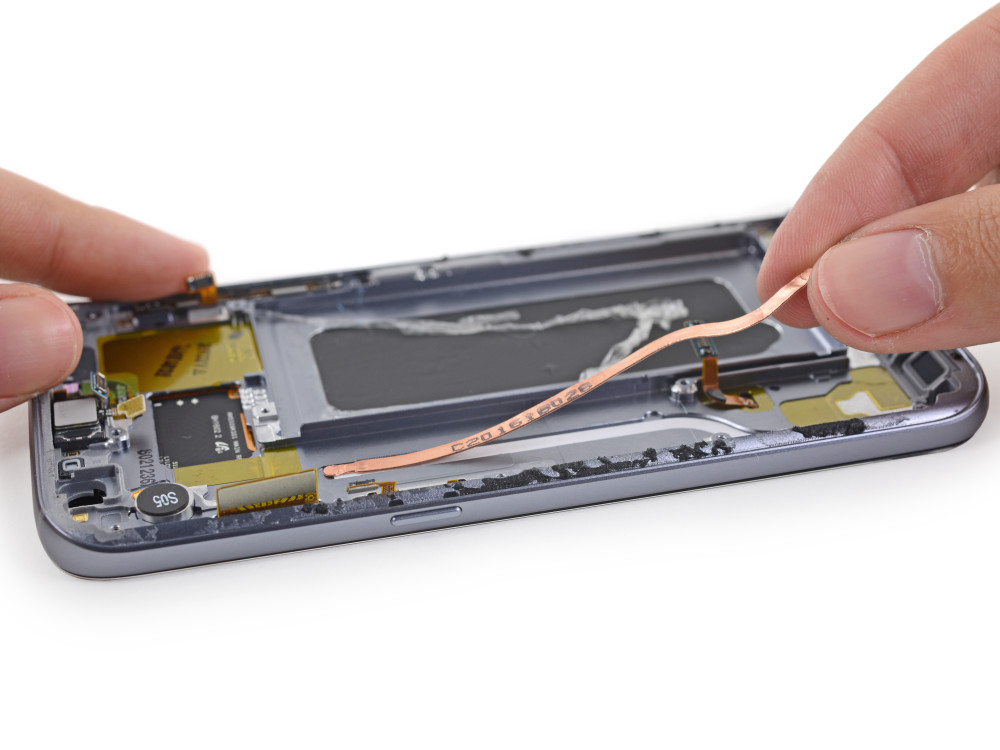As usual, iFixit boned the latest addition to Samsung to see if it was easy to repair. Spoiler alert: no, it’s not

The famous specialist electronics repair, iFixit, has screened the Samsung Galaxy S7, the output is officially attached to Friday. The new South Korean flag carrier has been disassembled piece by piece to reveal his deepest bowels. His predecessor had been gratified by the same site a grade of “repairability” of 4 out of 10. Will he he do better?
A hell dismantling
Let immediately end this unbearable suspense: no, the Galaxy S7 is not easier to repair than the Galaxy S6, on the contrary. Sealing forces, the note of “repairability” of GS7 attributed by iFixit is 3 out of 10. In addition to firmly glued parts, some of them are intertwined, requiring, for example, having to remove the front panel and LED notification before access to … USB port. Unfortunately, this is at great risk and iFixit, yet made up of professionals in the field, says that destroy the screen during this intervention is probably inevitable. In other words, if you want to change the USB port of your phone, also planning a QHD panel.
In addition to the screen, one of the most common surgeries performed on a phone is to change the battery. In this case, it can be accessed without removing the motherboard, which is good news. However, the amount of adhesives and glue the pieces together now is such that access is restricted to more specific.
No surprise the components side
As for is the many embedded chips, it is not surprising to find various brands, either Qualcomm for some transmitters or sensors, STMicroelectronics for the accelerometer, or Murata for WiFi module. Finally, there are also no surprise the UFS memory manufacturing house.

The famous cooling meanwhile heat pipe is limited to less than one gram to less than half -millimètre thick. This aims to remove heat from the processor by redirecting to the metal chassis of the device, where it can “shine in the air or in your hand …” .
No comments:
Post a Comment